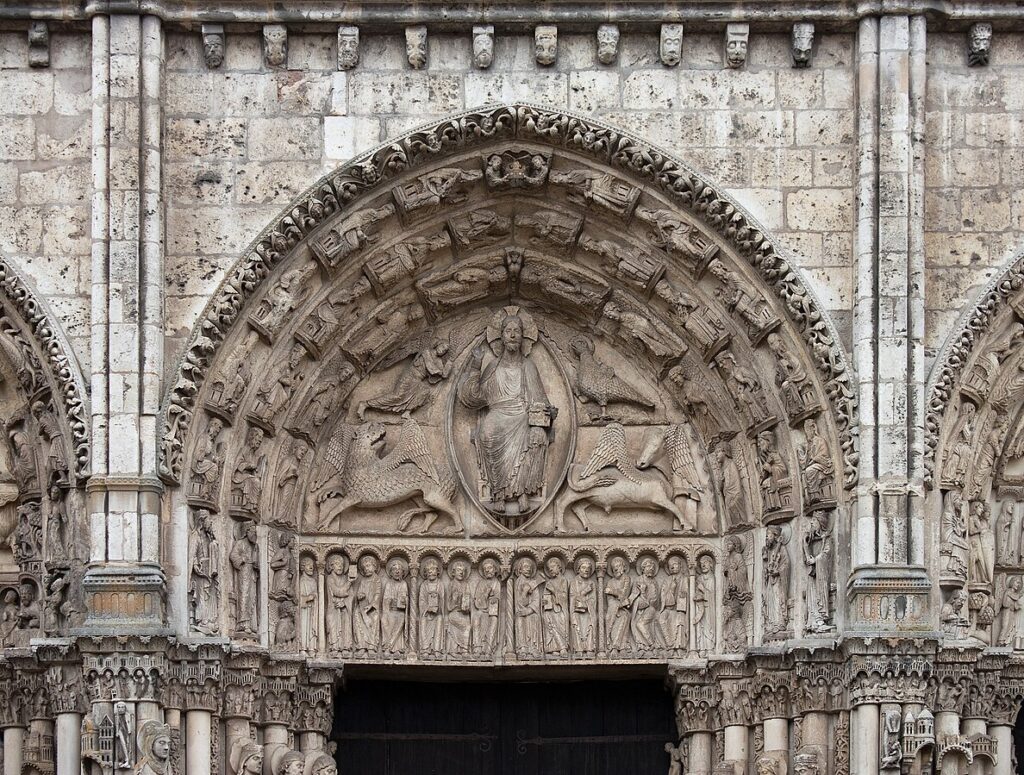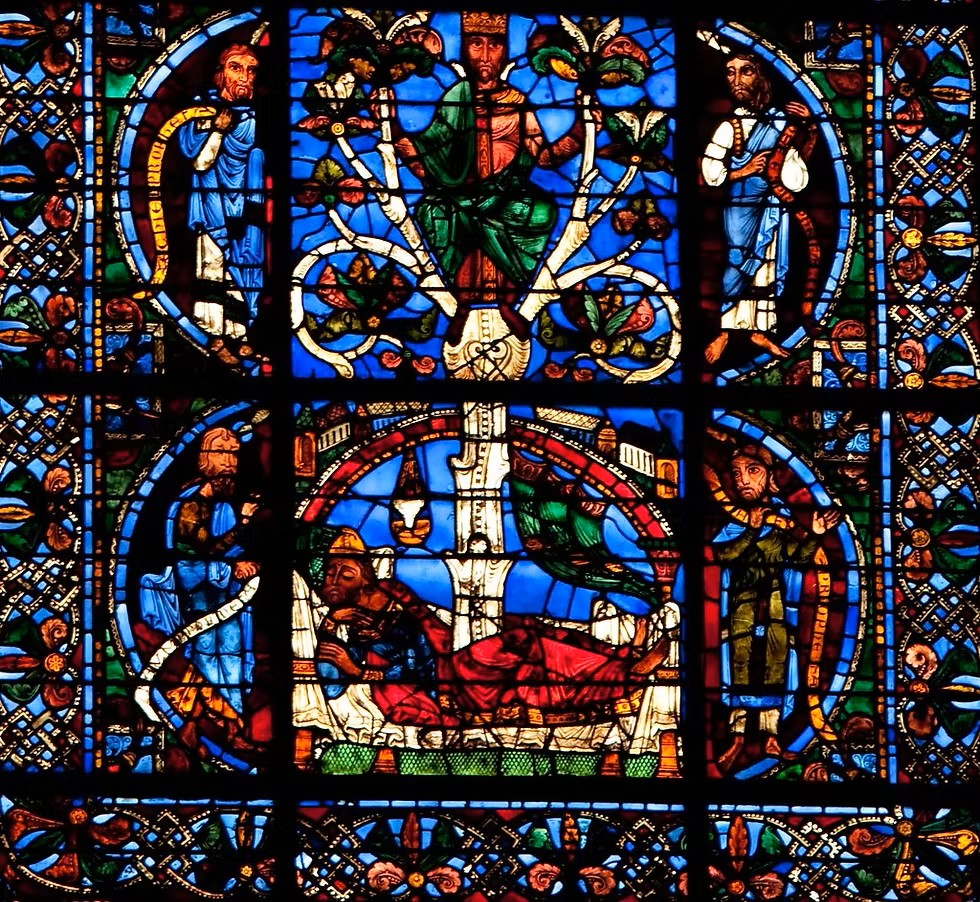“Don’t forget your bye knocks,” I heard my friend say as we set out from our Paris hotel. “My what? Bye knocks?” “Your binoculars,” she explained patiently, chuckling. “Your binocs!”
As we boarded the train from Montparnasse to Chartres, I kicked myself because we had forgotten our binocs. While travel binoculars are more associated with wildlife or landscapes, they are also indispensable for visiting cathedrals, and we were headed to see one of the most significant in France. In a way, we were going to “read” the cathedral.
Reading is, in our modern world, the basis of all modern schooling, including most religious education classes. The wisdom of this approach can be debated, as it was not always so. Much of medieval culture, including the way the Faith was handed down, engaged all the senses: it was aural, visual, tactile . . . it was incarnational and not “textual.” And that was by design, not deficiency.
We’re often scandalized to hear that while Medieval monks, clergy, nobles, and merchants were literate, the average medieval person could not read or write. But that may say more about our own worship of the written word than it does about supposedly unthinking or backward Medieval culture. Do we really think that today’s average Catholic knows his faith better for having read about it in a textbook? Or could there be something deeper that’s being missed, replaced by worksheets?
Perhaps a topic for another day—for now, we set about reading the cathedral like a Medieval pilgrim would.
The royal portals thrust forward, like a prologue.


Sculptures on either side of the West doors told Old Testament stories that foreshadowed the coming of Christ; at the top center was Christ enthroned, encircled by symbols of the four Evangelists: a winged man (Matthew), a lion (Mark), a bull (Luke), and an eagle (John).
Inside it was so dark. Much darker than I had expected; the only light came through the stained glass. Here the stories continued, and we realized we did not know all of them—far from it. One mysterious window captivated us most profoundly. What was this sleeping man with a tree growing out of his side? (As recent reverts to the Faith, it was our first exposure to a Jesse Tree.)
Our wonder was sparked, and we sought in the gift store a guide to Chartres’s stained glass. And then, as though one of our guardian angels had placed them there for us, we saw them: a pair of travel binoculars.
Armed with the book and that small pair of binocs, we returned to the Jesse Tree window. At its base, Jesse the patriarch lies in sleep, and from him springs a branching lineage: prophets, kings, ancestors of Christ. At the summit, crowned and radiant, the Virgin Mary cradles the child Jesus—the flowering of all salvation history. I lifted the binoculars and peered into the centuries.


The beauty of the Jesse Tree wasn’t just its colors or design. It was the story: generations waiting, hoping, praying. Each figure in that glass window once lived and waited for the coming of the promised Savior. And now, here I was—peering into their faces—learning again how to wait and hope. I traced the line from Jesse to Jesus, and realized I was tracing the same story that had, somehow, led us back to this moment.
And it struck me then—this was my own echo of Mary’s Magnificat. My soul magnifies the Lord, she sang. Here I was, awkwardly raising binoculars to my eyes in a dim cathedral, trying to magnify the Lord, too—not with my soul, not yet, but at least with a lens.
My husband pointed to another panel. “That has to be Daniel in the lion’s den,” he whispered, passing me the binoculars. And yes—there he was, serene amidst danger. Each time we lifted the binoculars, we felt like children again—straining to see something wondrous, trying to find the meaning behind the image. And again and again, it appeared: Noah’s Ark tossed on the waves. The Annunciation, tucked high into a window I never would have noticed on my own. Job in sorrow. Christ triumphant.
We even used the binocs to better see the cathedral’s most prized relic: the Sancta Camisia—the tunic worn by the Blessed Virgin Mary at Christ’s birth.
This was our Faith! Present, incarnational, made real by hand, sweat, and blood: Love made flesh, to dwell with us!
We exited through the north portal in the golden light of the late afternoon sun and found a table at a café in the cathedral’s shadow. There was no descending dove, no announcement from an angel. Just this quiet understanding: I wanted to see Him. I wanted to know this story.
I thought of Mary again—My soul magnifies the Lord. She didn’t need a magnifying glass to do it. But I did. And maybe that’s the mercy of it: that God meets us even in our fumbling efforts, our imperfect sight. He gives us tools to draw nearer to Him, even if they’re as simple as binoculars in a cathedral gift shop.
Photo by Mick Haupt on Unsplash
















